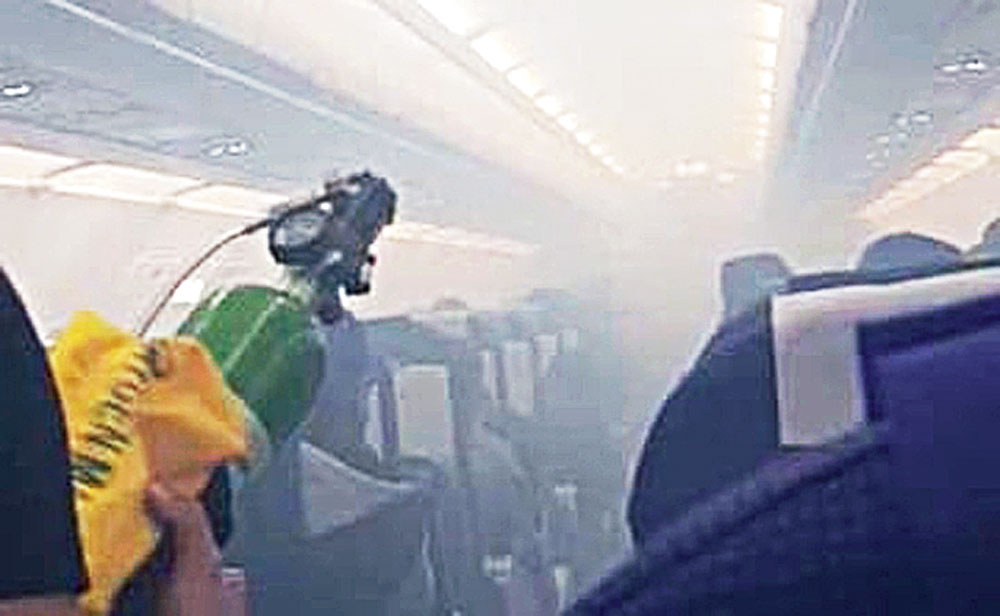The cause of the cockpit and cabin smoke that forced an IndiGo flight to make an emergency landing on Monday night has been identified as a bearing-oil leak from the engine that seeped into the aircraft’s air-conditioning duct, triggering a mid-air crisis that aviation experts believe would have been disastrous had it occurred a little earlier.
Flight 6E 237 from Jaipur with 136 passengers and a nine-member crew on board landed safely amid full emergency preparations at 10.32pm. The passengers had by then spent around 12 minutes in a cabin filled with smoke and cries of children apparently having difficulty breathing.
After touchdown, the Airbus A320neo taxied straight to the isolation bay, where many of the passengers were brought down through an inflatable evacuation slide that deployed at the rear.
“The preliminary investigation has revealed a leakage of oil from the engine that got into the AC duct. Mixed with the cold air, this got converted into mist-like smoke and gave off the smell of something burning. It is being investigated if there was a spark in the engine,” an official in the civil aviation ministry said.
Bearing oil is used to reduce the temperature of the aircraft’s Pratt & Whitney engine.
Sources said the smoke could have caused a disaster had the aircraft been airborne for longer than it was. The captain of the flight had called air traffic control (ATC) in Calcutta at 10.20pm, 12 minutes before landing. The flight was then 40 nautical miles (74km) away from the airport.
“Had smoke filled the cabin earlier than it did, the passengers could have choked. Oxygen masks would not have deployed then because of safety reasons,” an official said.
Most of the passengers had complained of breathlessness to a doctor who was at the isolation bay when they were evacuated. Nobody needed medical assistance, though.
Oxygen masks placed above the seats deploy automatically when the cabin pressure falls below the safety limit. Passengers can breathe normally without controlled cabin pressure till the aircraft reaches 14,000 feet above sea level.
An aircraft does have an option where the pilots can manually deploy oxygen masks with the press of a switch even if cabin pressure hasn’t fallen. But in the event of fire or smoke, oxygen masks do not deploy, an aviation safety expert said.
“Additional supply of oxygen will cause a fire to spread,” the engineer said. “When smoke is detected, there is always a strong probability of fire. So, oxygen masks do not deploy. Smoke in an aircraft cabin is one of the worst emergency scenarios.”
In such a situation, passengers are usually asked to cover their mouths and lower their heads.
Ajit Dey, an elderly passenger on the IndiGo flight that weathered the smoke challenge, had told Metro on Tuesday that the cabin crew handed wet handkerchiefs to cover the eyes and alleviate the burning sensation.
Senior officials of the Aircraft Accident Investigation Bureau, which operates under the civil aviation ministry, are in Calcutta along with a team from the Directorate General of Civil Aviation.
Engineers from Airbus and engine manufacturer Pratt & Whitney are also in town to examine the damage. Sources said the engine of the aircraft might have to be replaced.
IndiGo officials did not comment.
There have been reports of frequent snags in A320neo aircraft, mostly used in India by IndiGo and GoAir.










